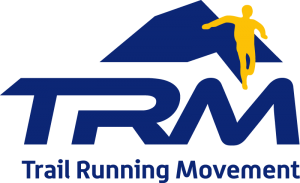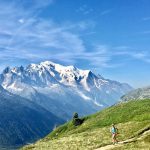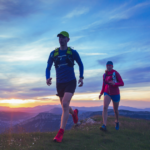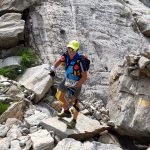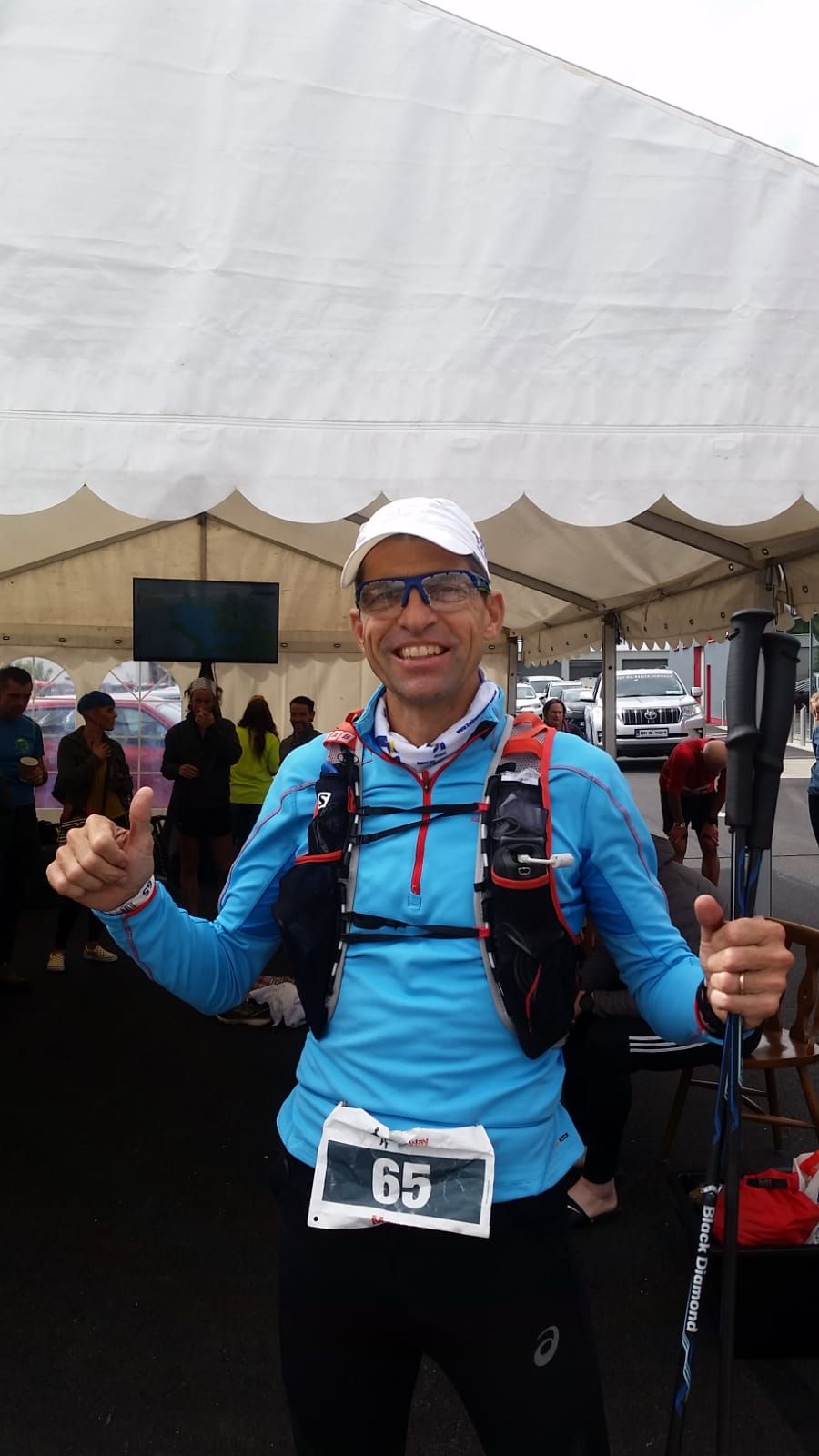
KERRY WAY ULTRA, 200KM IN SOUTH IRLAND OF MARCO MORI
The TRM Coach Marco Mori successfully raced the 200km Kerry Way Ultra Trail in just over 30h. We interviewed him to get to know this particular endurance race that still maintains the original “Trail Running Spirit” and understand the strategy adopted.
Why did you choose this 200km trail running race? When I choose my trail running goal race of the year I take into consideration numerous factors, but they are never always the same. Sometimes I choose trail running competitions for the landscape, other times to visit a new country, some years I consider the ITRA score prevalent. In some cases a look at the coherence with the distance and difficulties I’m able to manage thanks to my past experience. In other cases I’m convinced by an article on a trail running mag or by a story of another athlete I meet. The more years pass, the more difficult the choice becomes. After having raced competitions such as the UTMB, the TOR Des Geants, the Ronda Des Cimes (Ultra Trail Andorra), the Tranpyrenea, AVP501 or dozens of other competitions, the races I would like to participate in Europe are not many. In my dreams, I keep highlighted races like the Diagonal Des Fous, the Marathon des Sables, the Ultra Trail of Mount Fuji, an Ultra in Patagonia and a race in the USA, perhaps the Western States. This year for personal and professional commitments I was forced to stay in Europe, therefore I have chosen a race different from the others: a “fast” race not included in the famous trail running circuits.
How did you I prepare for this 200km race? Each race requires a different approach. If you aim for a sky marathon or a TOR, you will certainly have to organize yourself for long training sessions in the Alps, in the high mountains. If you choose fast races with little elevation, then training in the Apennines and hills are ideal. If the race is in the desert or on the snow, the management of a heavy backpack and extreme temperatures will make the difference. My objective race of the year was the Kerry Ultra of 200km and 5.500 meters D+, a race with fast rhythms and very shortstops. For this reason, the intermediate races were a 45km in Sardinia, the TRM Camp 100km at the Cinque Terre, a 170km ultra in Poland and the TRM Camp Mont Blanc of 167km. This organization of my training allowed me to progressively increase the workload by alternating one stage races with multi-days runs at the TRM Camps focusing on endurance. The mix was perfect. At the end of the race, I had no pain in the muscles, only a slight inflammation on my left iliotibial band that was over in 4 days, already taken into account because of the type of exercise to which I subjected my legs (long-running, continuous run).
Where does the race takes place? The Kerry Way Ultra is a single-stage race that takes place in Southern Ireland on the Atlantic Ocean Coasts. The information on the race are few and only in the English language. So we tried to discover something more by searching news about the “Kerry Way” which is the equivalent of a trekking route, almost completely traced from the race track. Finally, after we had a rough idea, we “shot” out our 18 questions to the organization that kindly answered our questions. No marks, weather and temperatures uncertain, no food or hot water supplied at the refreshment points …With Cristina (Tasselli, TRM Coach) we exchanged for a moment the doubtful look …. then we thought “worse than the Transpyrenea what can there be? Come on, this is a real trail running race!” The starting and arrival point of the ring covered by the race is Killarney, a very pleasant and effervescent town with an incredible offer of accommodation, restaurants, shops and, of course, pubs for all tastes. Speaking of tastes, don’t miss the Killarney beer (same name), produced in Ireland’s largest brewery … personally I liked the dark on tap! Around Killarney, there are several attractions, the Cathedral, the Castle, the MocRoos Palace, gardens and lakes, which can entertain the trail runner or the companions for a couple of days. As an accommodation, we have chosen an Irish B&B to fully savor the atmosphere of the place … it’s a great choice! To eat a couple of Asian restaurants to stay “light” and then, of course, the Killarney brewery.
How was the organization of the Kerry Ultra 200km? The organization has been tested and it’s directed by Aline, a really tough “Irish” woman who leaves nothing to chance! As I said the race, without a personal assistance crew (which is not only allowed, but strongly recommended) is tough. Lacking the classic references of refreshments points, in other competitions increasingly equipped with every kind of food and drinks, the race follows the “true” spirit of the trail running of the past. Therefore it is not for everyone, but only for trail runners with experience and able to organize themselves independently, also with the support of GPS navigation tools. We have chosen two main tools: Garmin eTrex and smartphone with the GpxTracker App and a navigation backup built into the Garmin 5 plus. The track downloaded by Trace du Trail and the tools allowed us to get to the end without problems, except for a couple of classic route errors due to lack of concentration after the 100km. The race has 10 refreshment points, 3 of which are indoor, where the organization will bring your bags with food, clothing and, above all, power bank! We have selected 5 refreshment points and distributed in the bags food supply, clothes and power banks for technology. Undoubtedly the choice was optimal because it allowed us to save time.
How about the terrain? The type of ground is the classic Irish one: flat land sections and gentle climbs on hills, lawns kept perfectly alternated with pastures full of mud, a few local villages that appear from nothing after long hours spent in the woods or endless expanses of moss or tall grass, paths that run alongside rivers or lakes alternating with secondary roads with hard ground and, finally, ridges that offer the most spectacular views over boundless plains or oceanfront cliffs.
How was the race? The departure was “super easy”, considering that our B&B was practically on the starting point. 6:00 am, mild temperature. Apparently good weather forecasts: slightly rainy from 6am to 10am and good weather for the following day. “Challenging” objective for the race time: 30 hours. The start and finish are located in a large petrol station with a 24-hour supermarket attached. At 5:30 the trail runner people popped up like zombies in the night and gathered around the diesel pumps … the time of the ritual photo and then “away”! The adventure begins. I will not tell the competition piece by piece, but only the most intense details to let you enjoy the course as soon as you have the time or desire to live the experience. The first part of the route is one of the most beautiful and varied. It alternates meadows, woods with moss, plains and hills of tall grass crossed by raised walkways compared to the water that stagnates below. Then follows the hilly part to the Ocean along the Coast, sometimes visible thanks to railways and then to change into extensive plains or muddy highlands that ride along ridges, along rivers or lakes. Finally, the last stretch returns to being hilly or low mountain without any particular steep slopes. Regarding the weather was not to bad. We had a storm which, however, lasted less than 2 hours and then, fortunately, mild temperatures until the end of the race.
What about your race strategy? I changed my race strategy between the second and third refreshment point when Cristina, already suffering from a bad heel injury, had to give up. To gain positions I decided to minimize my stops! I could also decide to increase the rhythm, but from experience it doesn’t work that much on endurace trail running competitions, because sooner or later you pay the price of glycogen deficiency that you can’t manage to reinstate enough during the race time. You can only count on the assimilated calories and on the glycogen reserves stored in the pre-race.
The adrenaline helped me to easily reach Sneem over the second part of the race, during the night section. The intermediate times, in two sections of the race, were the best amon the athletes, but then, slowly, the fatigue and the reduced possibility of correctly integrating energy loss had the upper hand, gradually reducing my running pace by 10%. In all cases the support of the organization was invaluable: arriving at each refreshment point they already knew who I was, they called me by name and gave me my bag … never seen anything like this in other races! Thanks to this and having climbed the rankings, I achieved the 17th position overall. I tried to push further again. I changed nutrition strategy and avoided stopping at the last refreshment point, catching 3 more positions, now close to the top ten, but aware that I was running with the strongest local Anglo-Saxon specialists and with a knee that by then didn’t want to feel like pushing.
Tell us you Finisher feelings! Finally the race ended with a satisfying 15th place overall, betrayed by a competitor who came out of nowhere a few meters from the finish line. Despite the tough controls, maybe someone managed to do a few kilometers less, but it doesn’t matter, I arrived exhausted but happy to have pushed all the time without stopping!
Every time a goal of an ultra or endurance is hit, the emotion is always alive. Trail running is not only a matter of competing but also an adventure that enriches you in sports experience and as a person. A race is, in fact, a journey into nature to discover remote places, cultures and traditions different from one’s own. Every race is different, every challenge a source of satisfaction.
Along the way and at the finish, encouragement and applause are the best awards, as much as a medal. The smile, an embrace and the warmth of one’s loved ones make fatigue and pain “disappear” temporarily (which will come back later!).
Bye bye Ireland!
endurance nutrition, endurance ultra trail, nutrition in trail running races, trail running coach, trail running in Irland, Trail Running Programs, Ultra Trails Races



